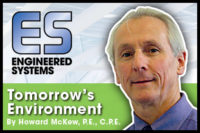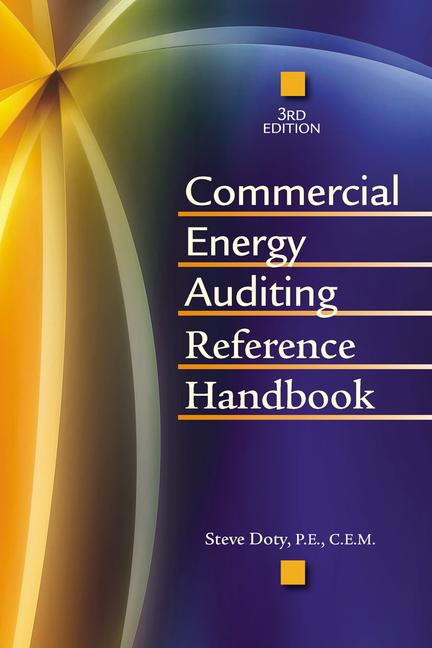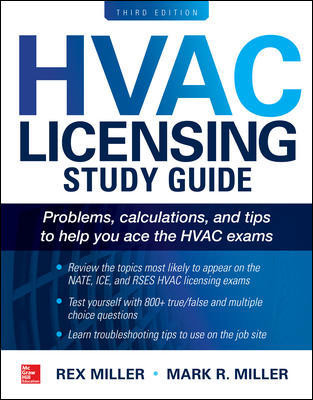Experience has shown me that many owners don’t have confidence in final TAB reports and, more importantly, don’t understand how TAB should be performed. As a rule, design engineers (DE) specify that the TAB company should follow industry standards, and, more often than not, the consultants then allow the TAB process to be compromised during construction. Until DEs actually participate in hands-on TAB work, they are not going to enforce the standards, because they really don’t understand the TAB process. Most general contractors and construction managers claim to understand the TAB process but prefer to leave the task to their HVAC subcontractor and let it be his problem.
TAB is the process in which each HVAC system is tuned up; it’s analogous to a tuned up automobile coming out of a dealership, ensuring the buyer that the miles-per-gallon energy performance posted on the window sticker will be met. Unfortunately, the building industry doesn’t appreciate this analogy and sees TAB only as a task that needs to be done (good or bad) as part of project closeout. At the same time, I don’t believe anyone in the building industry would accept their new car leaving the showroom sputtering and backfiring or not tuned up to achieve the miles-per-gallon as advertised. The solution to this is that TAB services need to be an extension of consulting engineering service, following a similar format as third-party commissioning consultants.
ESTABLISHING THIRD-PARTY TAB CONSULTING SERVICES
To begin my TAB thesis, let’s compare some of the job responsibilities and tasks of DE consultants and third-party commissioning agent/consultants (CxC) beginning with (Figure 1):
•
DE and CxCs don’t furnish and/or install equipment. Neither do TAB consultants.
•
DE and CxCs don’t furnish and/or install HVAC systems. Neither do TAB consultants.
•
Both services are directly connected to system performance and energy conservation. TAB consultants play an integral role in delivering HVAC systems that meet the design intent and need to be operating as efficient as possible when the balancing is completed.
I have all three TAB organization air and water balance HVAC systems manuals, beginning with National Environmental Balancing Bureau’s NEBB Procedural Standards for Testing, Adjusting, and Balancing of Environmental Systems, Version 7, which is unfortunately not as thorough as the older Version 2book. The Associated Air Balance Council (AABC) has its National Standards for Total System Balancing, which I’d categorize as pretty good, but not great. The third organization is the Testing, Adjusting, and Balancing Bureau (TABB), which has endorsed the SMACNA TAB Procedural Guide, First Edition, 2003. In my opinion, is the best of the three TAB organization instruction manuals, and, interestingly, this manual appears to be the same NEBB Version 2manual I used back in 1993. These “how-to” books all approach HVAC systems the same way a consultant would approach their job responsibilities:
•
Complete a design review, if not multiple design reviews. This is also a LEED® certification requirement. TAB books also reference a need for a design review with the TABB manual being the most specific as to how to approach a TAB review.
•
DE consultants and some CxCs produce system flow diagrams to show that the overall system, automatic control components, etc., follow along with the TABB preliminary TAB procedures. The TAB consultant is required to complete system flow diagrams.
•
DE consultants will have completed an air balance assessment per system, per zone, per floor, and/or per building to ensure the building does not operate at a negative pressure. Inventorying air-quantity documentation is most obvious by consulting engineers responsible for pharmaceutical projects, with their floor plans showing space pressure (+/ =) and direction-of-flow arrows going from one room to an adjacent room. Health-care consulting engineers will do something similar but often don’t clearly document this data on a contract drawing. TAB consultants complete this task as part of their design review “for TAB-ability.”
•
CxCs use a pending issue (PI) log and a corrective action (CA) log as part of their process. The TAB consultant also has his own PI and CA logs to track questions, observations, and deficiencies.
•
Both DE consultants and CxCs make field visits and report back using a standard field visit report document. Following similar procedures, TAB consultants should be completing field visit reports, too, when completing their required system-by-system pre-TAB inspections.
•
As part of each report, DE consultants and CxCs usually use some form of observation checklist. Each TAB organization has its own standard observation checklists, with AABC having probably the best selection of checklists for equipment inspection, as well as their system distribution checklist (airside and waterside). Each system should have a completed field report by the TAB consultant as part of the system-readiness portion of preliminary TAB procedures, and each report should include the associated completed checklist(s).
SELLING THIRD-PARTY TAB SERVICES
I have been selling third-party TAB to clients for several years now with great project satisfaction from clients and contractors. Even the TAB firms I’ve hired under this concept appreciate the approach, because they are allowed to do the job the way it should be done. It is time to officially recognize this third-party consulting service to the building industry with the DE or CxC partnering with pre-qualified TAB firms to begin the TAB process in the design phase with an enhanced TAB process.
How do you begin this valuable and much-needed business opportunity? Approach it like a consultant and not like a contractor.
I know from my years working for a design-build firm and a construction management company that while contractors focus their business initiatives on completing the job on time and within budget, engineering firms bring a consulting business approach to the TAB services that leads building owners to believe that a third-party TAB firm will deliver a better product. This doesn’t disqualify TAB firms, mechanical contractors, and construction managers from setting up their own third-party consulting firms. In fact, I encourage them to do this just as long as it is a separate consulting firm. Remember, perception is reality, and to break the mold when it comes to TAB services, being a third-party party consultant, just like a third-party commissioning firm, can eliminate many of the initial arguments when selling this service.
DESIGN PHASE
My vision of a third-party TAB approach mirrors my commissioning services and providing a consistent, consulting process beginning in the design phase with the following activities:
•
Solicit proposals from prequalified TAB firms to be a TAB partner/sub-consultant in the design phase.
•
Just as the Cx firms, kick off meeting with the design team to outline the TAB services.
•
Design review for “TAB-ability” just as Cx firm review for commission-ability with all observations/questions documented in the TAB PI log requiring responses from the design team.
•
Just as the Cx firm embeds the Cx plan into the Cx specification, write the TAB plan and embed it into the TAB.
This approach is where a proven methodology, within the TAB business process, can ensure a proactive TAB participation that will continue on into the start of the construction phase, as opposed to the more traditional TAB firm arriving on site later in the construction phase. It is important to note that while TABB guidelines (and to a lesser degree, AABC and NEBB) suggest early participation in the construction phase, it is really imperative that the TAB process start in the design phase and follow the steps noted above. Just like commissioning should start in the design phase, so should TAB, and the only way to achieve this is to have a third-party TAB consultant under contract for those design-phase services. This has been the initial missing link in past TAB projects that have resulted in less than successful HVAC projects.
THE CONSTRUCTION PHASE
“Preparatory work includes the planning and scheduling of all TAB procedures, collecting the necessary data, reviewing the data collected, studying the systems to be balanced, making schematic system layouts, recording the published data on the test reports forms, and finally, making preliminary field checks of the HVAC equipment and systems.”
This statement from the “SMACNA TAB Procedural Guide” emphasizes the importance of beginning the TAB initiative at the start of the shop-drawing phase of the project. For the majority of past TAB projects, this submittal requirement is the second missing link to a successful HVAC project and must change if building systems are going to be efficiently tuned up prior to commissioning.
My recommended submittal process is two-fold (Sidebar):
Submittal 1
• Firm certification (TABB, AABC, or NEBB), resume of TAB personnel assigned to the project including supervisor qualifications and organization, quality assurance program certificates
• Draft table of contents for final report and sample executive summary that will be integral to the final report
• TAB procedures documents, including associated system readiness checklists for air systems, water systems, and ATC verification, as well as specialty room TAB procedures and associated system readiness checklists and also duct pressure test TAB procedures for spot-checking with its associated checklist
• List of systems to be balanced along with samples of associated electronic documents to be used, such as:
• Contract drawing and specification review checklists for TAB-ability.
• Field observation checklists for equipment and distribution.
• Field report format continued use of the PI log and the introduction of the CA log.
While the design team, owner, and contractor review this initial submittal, the TAB sub-consultant completes its contract document review and develops what will eventually become the final TAB report, which includes:
Submittal 2
• Review each system sheet metal layout and piping layout relative to access, ability to balance each system, and other review comments, with all observations/questions included in the PI log needing response from the design team and/or the contractor.
• Review equipment schedules relative to capacity (adequate static pressure, excessive pump head, etc.) and equipment location (e.g., excessive discharge loss, potential stratification, and access to devices to balance the system(s).
• Inventory overall floor plan air balance at maximum supply air, return air, and exhaust air and at minimum supply, return, and exhaust air totals.
• Area space pressure calculations and cfm per floor plan with documentation of specific locations where duct velocity, static pressure, and cfm, as well as gpm and system pressure, will be taken at time of balancing.
• Development of system flow diagrams with pertinent “estimated design data” (static pressure, pump head, velocities, cfm, gpm, etc.) indicated on the applicable flow diagram. For “open water system,” also identifying net positive suction head (NPSH) requirement per pump shop drawing submittal.
How important are these system flow diagrams with pertinent design data? Analogous to traveling from coast to coast in your car, you wouldn’t do it without a road map, so why would a TAB professional show up to begin air and water balancing without documenting all the data in his final report-TAB book in advance to know the systems, to know what to expect, and to be prepared to know what is not per the design intent?
The two-phase submittal requirements are an amplification of the preliminary TAB procedures found in Chapter 2 of the SMACNA TAB Procedural Guidewith enhancements included in the third-party TAB specification. AABC and NEBB manuals don’t get into enough detail on preliminary process as the TABB manual but instead focus on how the work will be completed.
Next comes the TAB sub-consultant’s participation in the contractor’s field coordination drawing phase, signing off on these 3-D BIM documents. The TAB sub-consultant should participate in specific commissioning meetings, along with the more traditional trade contractor meetings, to keep abreast of construction activities and to contribute input regarding the project schedule and also regarding the Cx test plan and schedule document.
A third weak link in the traditional TAB process is the field visiting activities associated with system readiness leading up to the final balancing. The TAB plan/specification will require a field visit report per system and include completed Pre-TAB checklists for each piece of equipment and associated distribution inspection along with photographs to further document the installation. The TAB sub-consultant will transform PI log, documenting issues of concern not identified in the TAB-ability design review into a CA log that will be used to document deficiencies that must be corrected prior to balancing of specific systems.
It is important to note that just like Cx field visit, reporting should be completed electronically. All TAB documentation can be done using an iPad or tablet computer including “design-to-actual” data input on the project-required system flow diagrams that were produced back in the submittal phase of the project.
Once the field visits are completed, the system readiness moves to air and water balancing. Here is where the TAB sub-consultant’s technicians will be on site, armed with all the documentation and knowledge, ready to implement the testing, adjusting, and balancing per the TAB specification. These TAB activities lead directly into the commissioning functional performance test of each system, where the system shall be demonstrated to the CxC and the owner’s facility personnel.
THE FINAL REPORT
Having already started the final TAB report in the submittal phase of construction, the third-party TAB sub-consultant will have been populating this report as the project progressed. Each system will have had its own sub-folder where the design review document, associated field visit report, pre-TAB checklists, and system flow diagrams are kept and updated as the job progressed.
In addition, the associated fan curve or pump curve will have been added and the design-to-actual data included at the time of balancing. Another section of the report will be where the PI log and CI log resolutions are kept. The floor plans with sheet metal and pipe distribution shown and the TAB technician’s marked up of design-to-actual data (static pressure, duct traverses, etc.) will have been inserted into the subfolder.
An important section in the final report, and one that most consulting firms are familiar with, is the executive summary right at the front of the report where those interested in the system tune-up performance can get a quick and to-the-point assessment of the entire air and water balancing procedure. This report will also include design intent document, the actual operating conditions, things to consider in the near future, when to re-balance the system, and recommendations for special needs such as healthcare air balance compliance.
SUMMARY
Air and water balancing is not just taking readings and confirming the data shown on the contract drawings have been met. To quote Mr. W. David Bevirt, P.E., from the National Environmental Balancing Bureau’s Environmental (NEBB) manual, Environmental Systems Technology, “Testing, adjusting, and balancing personnel no longer can be just instrument readers, they must understand fully how to perform their work.”
Third-party TAB consulting services are as important and needed as third-party commissioning services, and the time has come for the building industry; building owners and operators; organizations such as the USGBC, ASHRAE, APPA, ISPE, and ASHE; and others to mandate these services to be facilitated by consultants who are proficient in HVAC design and construction, air and water balancing, commissioning, and construction management. They need to also be proficient in project management, report writing, and communication. Once a third-party TAB consultant is hired, it is now time to allow those TAB professionals trained and experienced in testing, adjusting, and balancing to do their jobs, beginning at the start of the design phase following their TAB organization guidelines. ES








